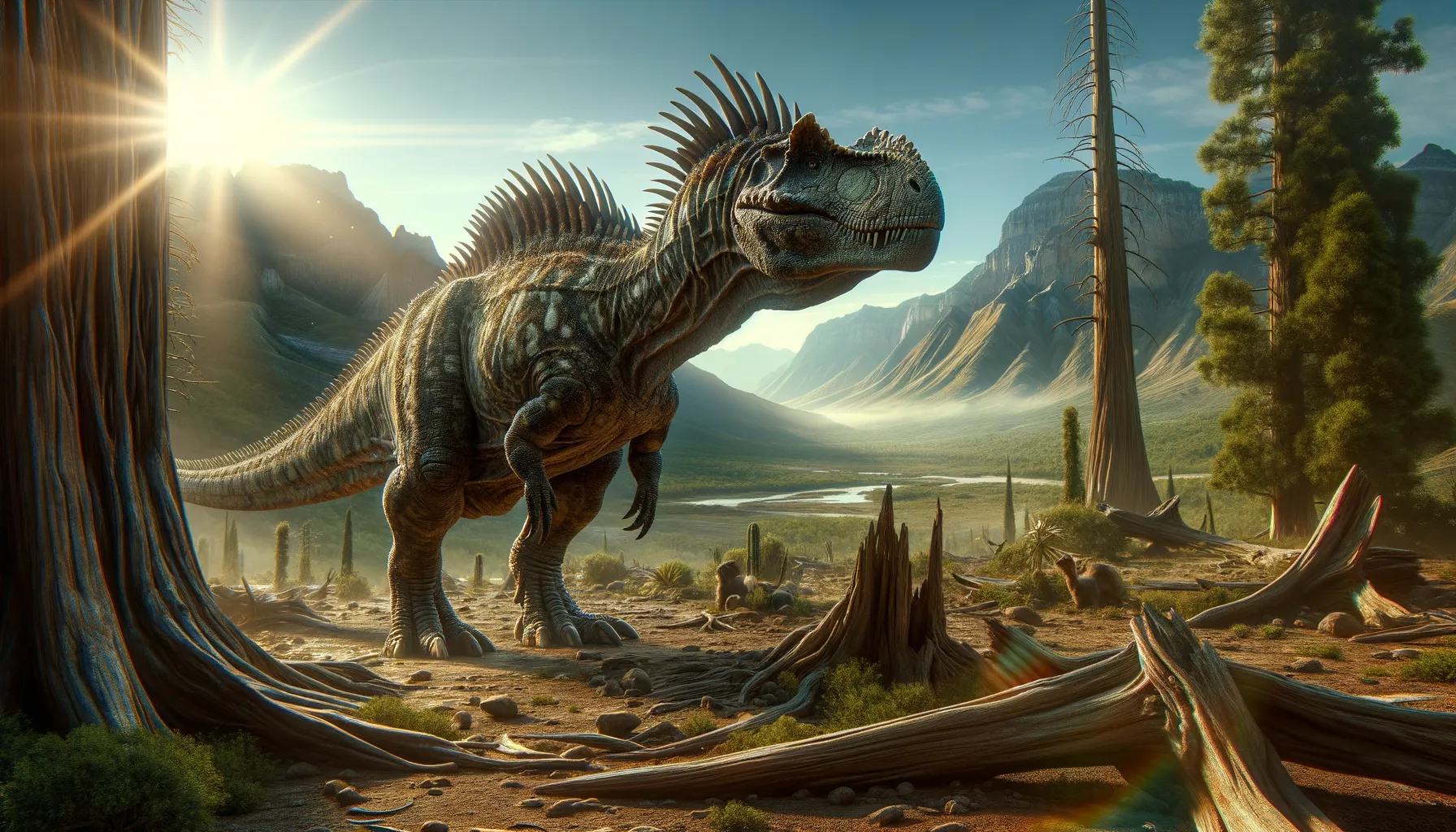
Acantholipan
Armored giant of ancient lands.
Period
Cretaceous
Length
Around 15 to 20 feet long.
Height
Approximately 6 to 7 feet tall.
Weight
Around 2 to 3 tons.
Acantholipan was a heavily armored dinosaur from the Cretaceous period discovered in modern-day Mexico. With a body built to endure, it featured rugged defenses that deterred predators. Despite its formidable appearance, it relied on camouflage and landscape for safety. Its discovery has provided valuable insights into the diverse range of armored dinosaurs present in ancient ecosystems.
Diet
Acantholipan was a herbivore, primarily feeding on low-lying shrubs and vegetation. Its diet consisted of a wide variety of plants available in its environment.
Hunting
As a herbivore, Acantholipan did not hunt but foraged for plants. It utilized its strong jaw to pull and chew tough vegetation.
Environmental challenges
Acantholipan faced various environmental challenges, including fluctuating climates and competition for food resources with other herbivores. Predation pressure from large carnivorous dinosaurs also posed a significant threat. During resource scarcity, Acantholipan had to travel longer distances to find lush feeding grounds. These challenges required adaptability and strategic use of its armored defenses for survival.
Speed
Possibly slow-moving due to its heavy build.
Lifespan
Estimated to be several decades long.
First discovery
Discovered in Mexico in the late 2000s.
Fun Facts
- Acantholipan was a dinosaur that lived around 85 million years ago during the Late Cretaceous period.
- This dinosaur was named Acantholipan based on fossil remains found in Mexico, being the first nodosaurid discovered there.
- Acantholipan belonged to a group of dinosaurs known as nodosaurids, which were herbivores with armored bodies.
- The name Acantholipan comes from Greek and Nahuatl, meaning 'spiny Lipan', with Lipan referring to a group of Apache people.
- Acantholipan is thought to have been covered in bony plates and spikes that helped protect it from predators.
- Unlike some of its relatives, Acantholipan did not have a tail club, but its body armor was still quite impressive as a defense mechanism.
- Its discovery helped paleontologists learn more about the diversity and spread of armored dinosaurs in North America.
Growth and Development
Acantholipan underwent a slow growth process, contributing to a long lifespan. Hatchlings likely inherited small armor pieces which developed into thicker defense layers over time. Its growth was supported by a steady intake of fibrous vegetation. The species showed distinctive growth patterns, with shifts to stronger and sturdier physical characteristics as it aged.
Habitat
Acantholipan lived in semi-arid regions with scattered vegetation. It thrived in areas with a mix of open spaces and dense plant life, providing ample food and cover from predators. The varied terrain helped in thermoregulation by offering sunlit areas for basking and shaded spots for cooling down. This habitat choice was strategic for nourishment and safety.
Interaction with other species
Its armored body minimized aggressive encounters with predators, allowing safe co-existence. Acantholipan shared its habitat with other herbivores, forming mixed groups for protection. It occasionally participated in resource competition but prioritized avoidance over confrontation. These interactions shaped its social dynamics and survival strategies.
Natural lifespan
Acantholipan's natural lifespan was likely several decades.
Reproduction
Acantholipan likely laid eggs in carefully chosen nesting sites, much like modern-day crocs. Females may have provided basic protection to nests using instinctive camouflage techniques. Hatchlings were vulnerable and relied on group strength for survival post-hatching. Reproduction was crucial in maintaining population levels amidst predator threats.
Social behaviour
Acantholipan exhibited social behaviors, forming small groups as a defense mechanism. Within these groups, individuals cooperated to find food and safeguard against common threats. Such social structures enabled enhanced vigilance and shared responsibilities. Communication within the group was key, possibly through visual or vocal signals.
Fossil locations
Fossils of Acantholipan have been found primarily in Mexico. These fossil sites have provided significant insights into the distribution and lifestyle of this armored dinosaur. The discoveries in Mexico suggest that the region was once home to a diverse range of dinosaur species during the Cretaceous period.
